

Alex Harrell is a farmer who thrives in the details and refuses to get comfortable.
His unending quest to harness the yield potential of his crops has led him to a new level of intensive management across Harrell Farms, his family’s 3000-acre operation near Smithville, Georgia.
“I’m not satisfied with the standard procedure of agriculture in this country,” Alex said. “As farmers, we are terrible about getting stuck in a rut and not changing anything. But I don’t like doing the same thing as everyone else. I look at my crops and want to know why they do what they do.”
This tenacity to better understand his crops directly contributed to his recent achievement of attaining the latest world record yield in soybeans, with the official measurement coming in at 206.7 bushels per acre.
However, success on this level doesn’t happen overnight. For Alex, 33, every single aspect of what goes into his crop – the seed, the products, the timings, the effects of weather and the environment – are equally important, and he’s spent years continually trying new things to ensure success, constantly altering the aspects of his program that he can control to hopefully achieve better results.
“I’ve always enjoyed planting seed and watching it grow, maximizing the potential of what it can be,” he said. “We can only control what we can to the best of our ability. We can’t control the weather, markets, the environment.”
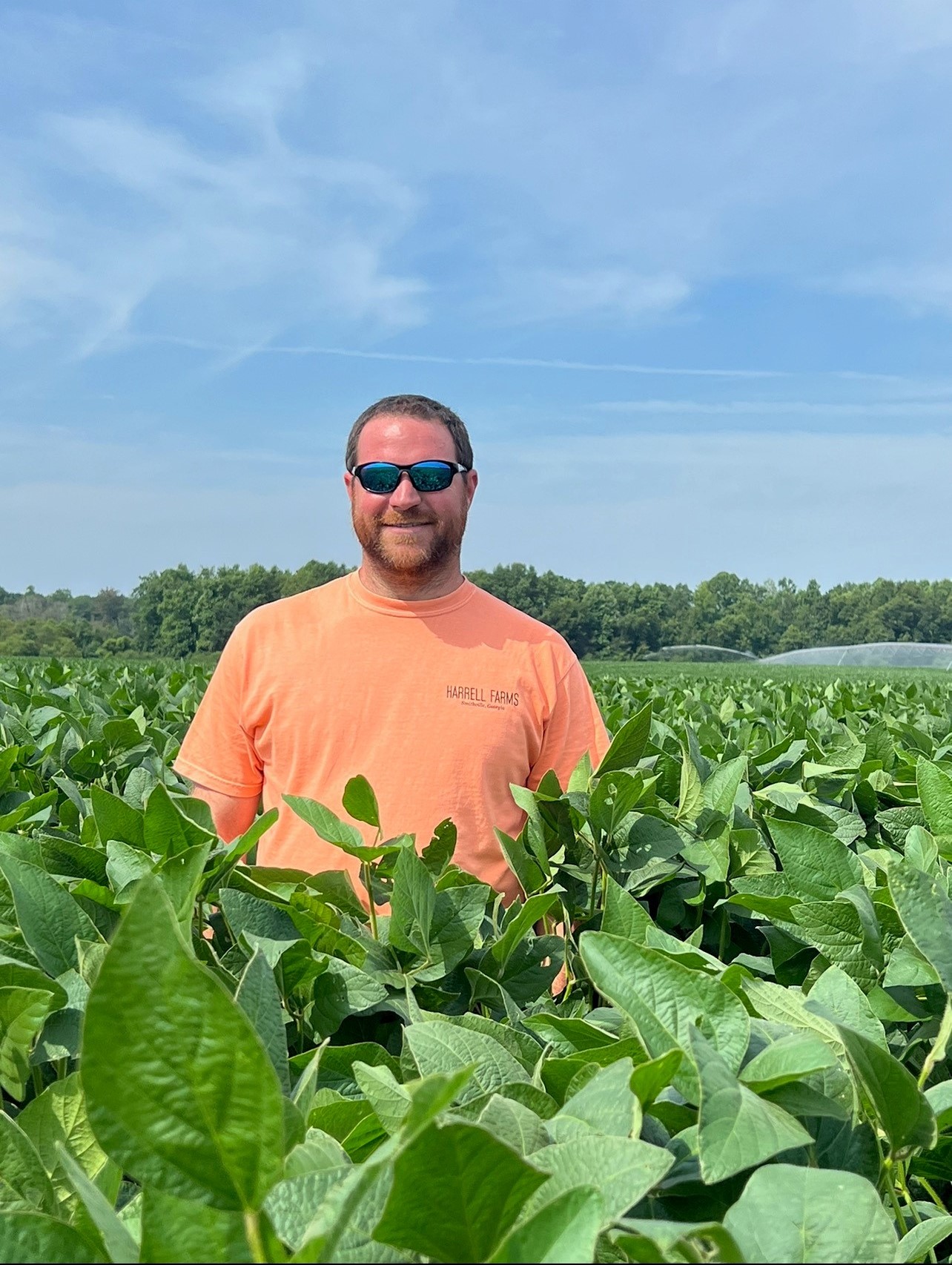
Alex Harrell
World Record Soybean Farmer
Within the realm of altering controllables, Alex has undertaken some fairly extreme changes to the overall operation in the past few years.
For example, he recently downsized from 6000 farmed acres to just over 3000 in order to do a better job on each individual acre by improving application timing and frequency. Even his crop selection is relatively unique for his area. While the primary crops in his region are cotton and peanuts, Alex’s operation primarily raises corn and soybeans.
“I’m pretty much set on corn, soybeans, and wheat, but I’m different than most around here,” he said. “In soybeans especially, acres are very low, and they’re usually only raised as a secondary crop planted ahead of anything else. In many of those cases, the average yield is 30 bushels.”
So, how does a farmer find success raising soybeans in cotton and peanut country, let alone make world record yields? Much of it comes down to elevating capabilities and capturing more potential across all acres. In essence, the success of this new record is the result of years of constantly honing his application plan and using his soil to its utmost capacity.
“Soybeans have never been my primary focus,” Alex said. “I didn’t necessarily start and say I’m going to break the world record this year. I treat all my acres the same. I’ve always enjoyed pushing corn, going for high yields and such, and a lot of what I learned pushing corn, I translated over into the soybeans.”
As with any crop, the foundation of success begins below the ground and works its way up through fertility and tillage practices; and an increased focus on each individual acre means collecting data on every acre all throughout the season. To that end, Harrell Farms pulls soil samples in one-acre grids each year – with 3000 acres, that’s 3000 soil tests. Then, the operation follows up by pulling tissue samples each week from emergence to desiccation, granting insight for in-season fertility applications.
At times, farming in the soils of southern Georgia is like farming in beach sand. On Alex’s farm, for example, cation exchange capacity (CEC) readings are commonly in the 4 to 7 range, with organic matter levels of less than one percent. With such low CECs, the rule of thumb is to constantly spoonfeed a little bit of everything with liquid. Beginning with the planter, he applies 50 gallons of fertility – 7 in the furrow, and 40 to 45 banded in a 3 x 3 x 2 placement – ensuring a good starter that includes 50 to 60 units of nitrogen. Then, using his tissue sample data, he follows up regularly with fertigation, Y-drop applications, and more.
For him, the key benefits gained using liquid are accessibility and efficiency in crop penetration to create a healthier plant.
With so much to keep organized on the farm, it’s important to bring on extra help that you can trust. However, finding the right person can be difficult. Harrell Farms has seven full-time employees that handle day-to-day operations, but obtaining a crop consultant with a like-minded yet objective eye has historically been a challenge.
“I’ve got a pretty bad taste in my mouth for consultants and scouts,” Alex said. “A lot of them want you to spray, spray, spray no matter what to cover their end and make them look better. They’re not on the same page as I am. For example, most consultants around here can’t tell you what a base saturation is, let alone how to balance it out.”
Eventually, he found a kindred spirit in Caleb Traugh, 27, who farms about an hour southwest of the Harrells and works as a consultant in southern Georgia.
The two had communicated off and on discussing farm topics for years, but after a conversation at a field day Caleb hosted in 2022, Alex brought Caleb on to do some scouting and soil sampling.
“Last fall, Alex asked me, ‘You want to come and pull soil samples?’” Caleb said. “I said sure, and he asked me when I could start. I told him I could start right away tomorrow. Then he said, ‘I want one-acre grids on my whole farm.’ And that that was just a small indicator of what I was getting into.”

Part of setting the stage for soybean yields was a strategy that included using Inertia from Hefty Naturals to increase bloom and pod retention, resulting in dense clusters of plump pods on each node.
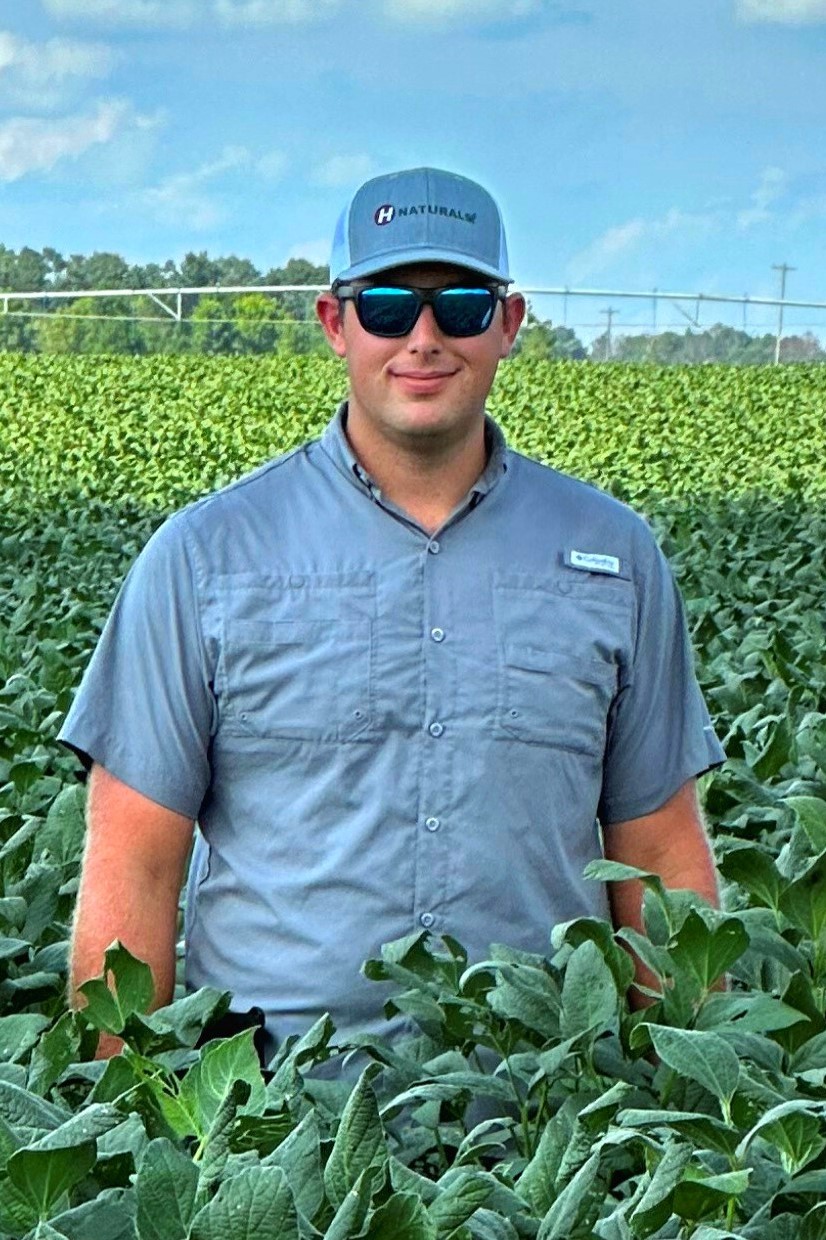
Caleb Traugh
Farmer & Crop Consultant
Once Caleb started working with Alex and they began having more conversations about crops, equipment capabilities, aggressive yield goals, fertility removal rates, and the ability to cover acres at the right timings, it became clear that they were on the same page regarding ways to continually push the envelope on crops.
For Alex, the key was that Caleb’s attention to detail nearly matched his own.
“We hired Caleb this year for the first time, and it was a game changer,” Alex said. “Caleb is extremely thorough. He puts hours into every field, not minutes. He knows every variety. He knows the crops as good as I do in each individual field. He’s thorough with soil samples and gets a copy of the tissue samples, as well. Now, we get together and come up with a plan – foliar, Y-drop, fertigation, all that.”
“I didn’t expect to be as involved with crop management on his farm,” Caleb said. “I’m sure Alex knew exactly what he wanted to do, and I figured I’d just be there to give a report of what was going on in his fields. But then he started asking me what I thought about this or that and asked me to put a plan together. This year, for every single application he’d make, he’d ask for my input, and I’d make revisions to the recipe if needed. We work well together because we both have a big focus on attention to detail, and he’s also one of the few people that’s willing to try some of the crazy ideas that I have.”
When it came to building a cropping plan, Alex had some ambitious goals for success – he wanted to shoot for better than 100-bushel soybeans and 300-bushel corn.
Granted, no one was expecting to break 200-bushel soybeans, but Caleb was galvanized by the opportunity to work with someone willing to push that hard.
“When he told me his yield goals, I thought – okay, now this is interesting,” Caleb said. “Other consultants said that’s not even possible, and there’s no point in working with someone who has goals like that because they are just setting themselves up for disappointment. After understanding what Alex’s potential was, I knew those yields were definitely attainable.”
To make such lofty goals a reality, Alex and Caleb focused a lot on availability of fertility and reducing crop stresses. When 300-bushel corn requires more than 400 pounds of K2O potassium while the soil can’t provide even 100, that means lots of passes are needed to ensure the soil itself doesn’t get thrown out of balance when attempting to provide ample fertility.
Every trip across the field – and there were many – had a little bit of everything the crop needed.
“With Alex, I realized we needed to focus on the offensive management,” Caleb said. “I knew he was going to be able to keep the crop fed and watered. The basics were covered well, but how do we make sure nothing else interferes with that? How do we push the crop? How can we make the plants more efficient at being able to utilize the water and nutrients that we have – also the sunlight, too, because we need a lot of photons to make those kinds of yields? It was easy to get him to look at another product because as soon as I said it’s all gas and we’re going to be stomping that gas pedal down, he was on board.”
In addition to straight fertility, biologicals also played a big role in building Alex’s crops.
Typically in the South, biological products, especially plant growth regulators, have not been historically utilized in terms of increasing nutrient efficiency in plants. According to Traugh, many growers in the area consider PGRs as something to apply on cotton to regulate height, but there are dozens of options available to influence an improved crop. The key was selecting which biologicals and PGRs to use at certain timings to get the maximum benefits from fertility and improved plant processes.
Among the products selected that contributed to Alex’s world record soybeans were two from the Hefty Naturals product line – Alpha Complete and Inertia.
ALPHA COMPLETE
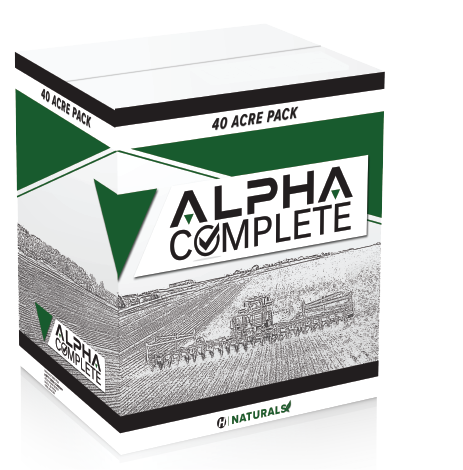 First, Alpha Complete was used as part of the in-furrow program. Various components of this product act as nutrient solubilizers to get the most fertility out of the soil, but Alpha Complete also contains ingredients that improve plant processes such as the internal transport mechanisms in plants. In situations with ample fertility, this typically results in more yield.
First, Alpha Complete was used as part of the in-furrow program. Various components of this product act as nutrient solubilizers to get the most fertility out of the soil, but Alpha Complete also contains ingredients that improve plant processes such as the internal transport mechanisms in plants. In situations with ample fertility, this typically results in more yield.
“With Alpha Complete, we typically see a larger seed size,” Caleb said. “Alex had the fertility there to make large seed, so we stacked on biologicals with the same goal. He was able to get soybean seed sizes of 1600 to 1700 seeds per pound, rather than the standard of 3000 that is usually used to calculate yield. That’s not everything, but it’s one piece of the puzzle.”
INERTIA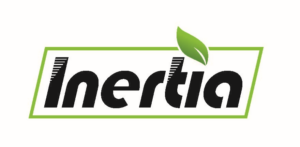
The other Hefty Naturals product Caleb recommended for both corn and soybeans was Inertia. Inertia is a cytokinin product that also contains GABA and choline chloride.
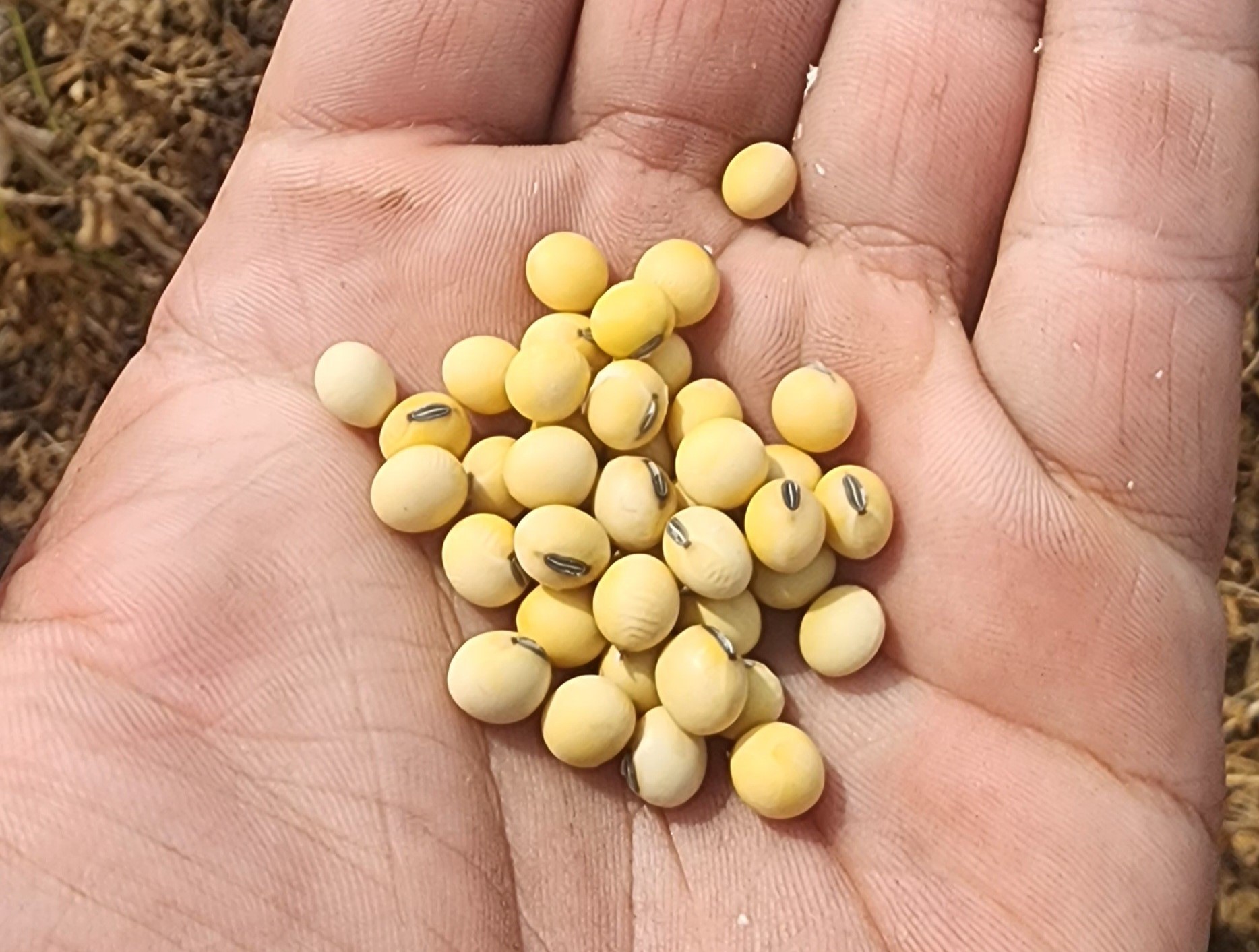
Big beans beget big yields. Crops are sold by weight, and the standard number of soybean seeds per pound is 3000. In Alex Harrell's record-breaking crop, the soybeans bulked up big time, resulting in seed sizes of 1600 to 1700 seeds per pound. The biological components in Alpha Complete contributed to this increased seed size.
In corn, they used Inertia at two separate timings, with the first application just prior to tassel to aid with increased pollen viability. This is especially important in hot southern summers, as corn pollen doesn’t remain viable very long in 95-degree conditions. Inertia also increases chlorophyll development and optimizes plant metabolism to stimulate additional plant growth, so a second application at R3 helps to improve kernel weight.
“People say that we need sunlight in a jug to really push things,” Caleb said. “Well, this is the closest thing to sunlight in a jug because it’s able to maximize the sunlight that we get.”
In soybeans, cytokinin promotes additional flowering, but the GABA and choline chloride also increases flower and pod retention. On Alex’s soybeans, Inertia was used at both the R1 and R3 stages.
“It doesn’t do us any good to put more flowers on if they don’t stay,” Caleb said. “Instead of being able to put just three soybean pods on a node, we can now make four or five, so increasing the clusters.”
“That’s what Inertia does on the soybeans, as well as helping to make a larger seed. When we consider how many seeds we produce per acre, that makes seed size or kernel size the number-one yield-determining factor. If we can make each one just a little bit bigger, our yields skyrocket.”
As harvest approached, Alex and Caleb kept an eye on the soybeans. While they didn’t necessarily think it was a 200-plus-bushel crop, it was clear that the aggressive management plan was going to yield good results.
“I knew they were going to be good soybeans; Alex knew they were going to be good soybeans,” Caleb said. “But we didn’t have an idea of exactly how good it was going to be until basically after we desiccated them. Once the leaves fell off and we saw the sheer size of those soybeans after they dried down, we thought – wow, this is going to be impressive.”
Once the combine started rolling and the yield monitor began to show the results, the reality of the potential Alex had captured became apparent. He had planned for yields in excess of 120 bushels, but by paying attention to the crop and feeding it throughout the season, the expectation rose to possibly achieving mid-to-upper 100s. In the end, though, it was the seed size that really made a difference.
“Right ahead of the combine, we’re literally bean counters, shelling and weighing them by hand, coming up with 1600, 1700 seeds per pound,” Caleb said. “If we’d have had just a normal 3000 seeds per pound, that would be 120-bushel soybeans, which is what I’d consider to be a typical high yield soybean goal. Alex was able to take the same number of beans and increase the seed size to go from 120 to 200 bushels. We had some of the best conditions for early planted soybeans that we could ask for in South Georgia, and everything just came together.”
Even after achieving 206.7-bushel soybeans, Alex continues looking to the next step, that one additional thing to keep pushing for yields. Harvest 2023 is barely on the books, and he is already looking ahead, making tweaks and changes for next season.
“We set the world record soybean yield this year, and I’m already wondering what I can change for next year,” he said. “I’ve already completely revamped my fertility plan for next year on both corn and soybeans and thinking about changing row spacings on some acres. I hate to get comfortable.”
As Alex looks forward to next season, Caleb looks forward to continuing to learn along with him, as both men have the drive to get into the field, be students of the crop, and try new tactics for continued success.
“Right now, we still have a crop in the field, but it seems like our conversations have turned from finishing out this crop to, what can we do for next year?” Caleb said. “That’s what Alex and I have been discussing for the last couple of weeks. Changing applications, upgrading equipment, anything we can do to set up next year to be even better. My goal with Alex – and I know his goal is the same – is how can he set a new personal best? Yes, we realize that would mean breaking another world record, but the future is bright and the possibilities of what we’ll be able to do are endless. And I realize, too, that I’m just a spoke in the wheel of the achievements that Alex was able to do. It is an honor to be on his team. The success that I have is just a reflection of the growers I work with. I’m glad to be able to work with guys like Alex who have the same drive that I do and who are perfectionists in whatever they set out to do. He has set the bar high.”
When it comes to advice for other farmers looking to break their own yield records, Alex’s advice is simple.
“Don’t be afraid to try new things,” he said. “If I had just kept doing what I always did, I’d still be getting 40-, 50-, 70-bushel beans, and that would be it. I’ve been all the way down the path of trying to be profitable by cutting costs all the way back up to getting record yields. In the end, I’d say – just don’t be afraid to try.”
